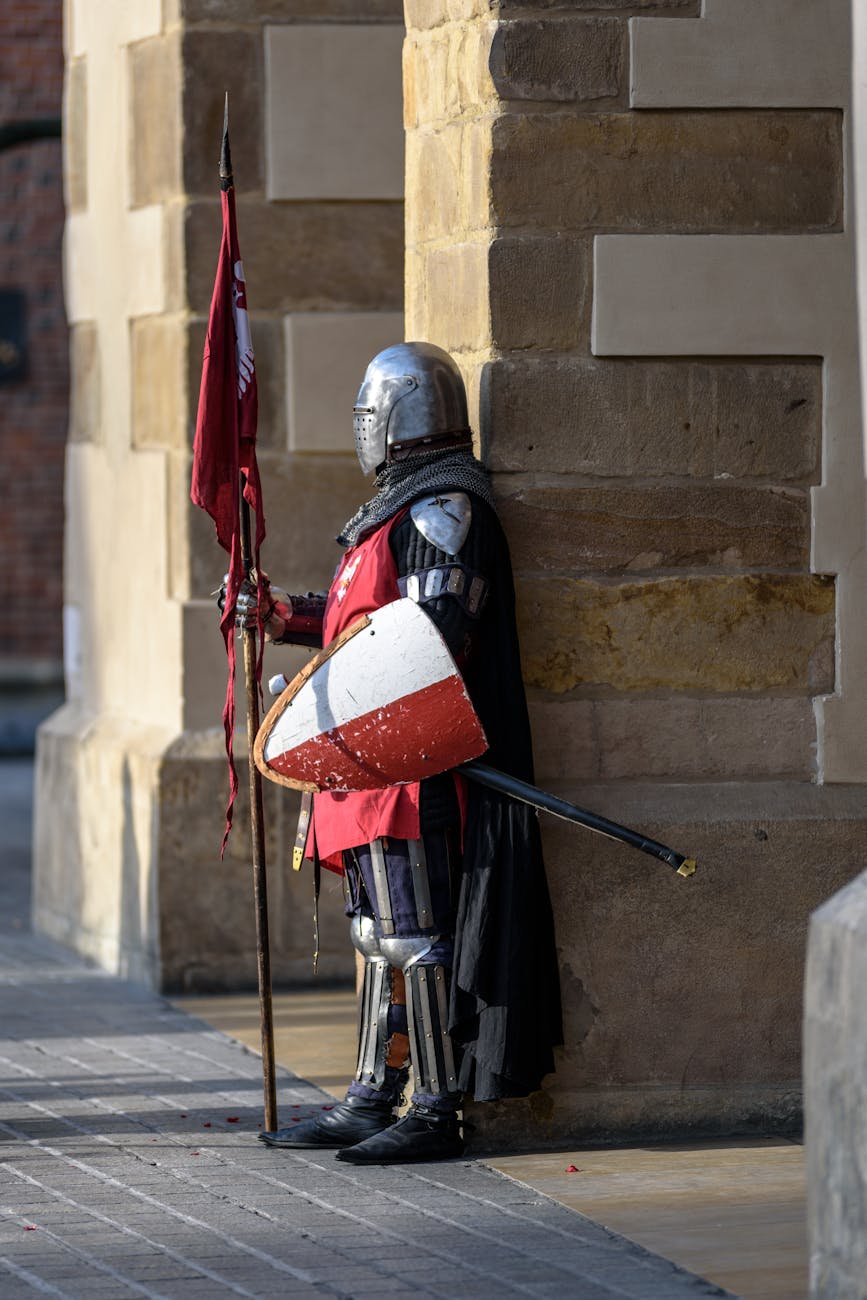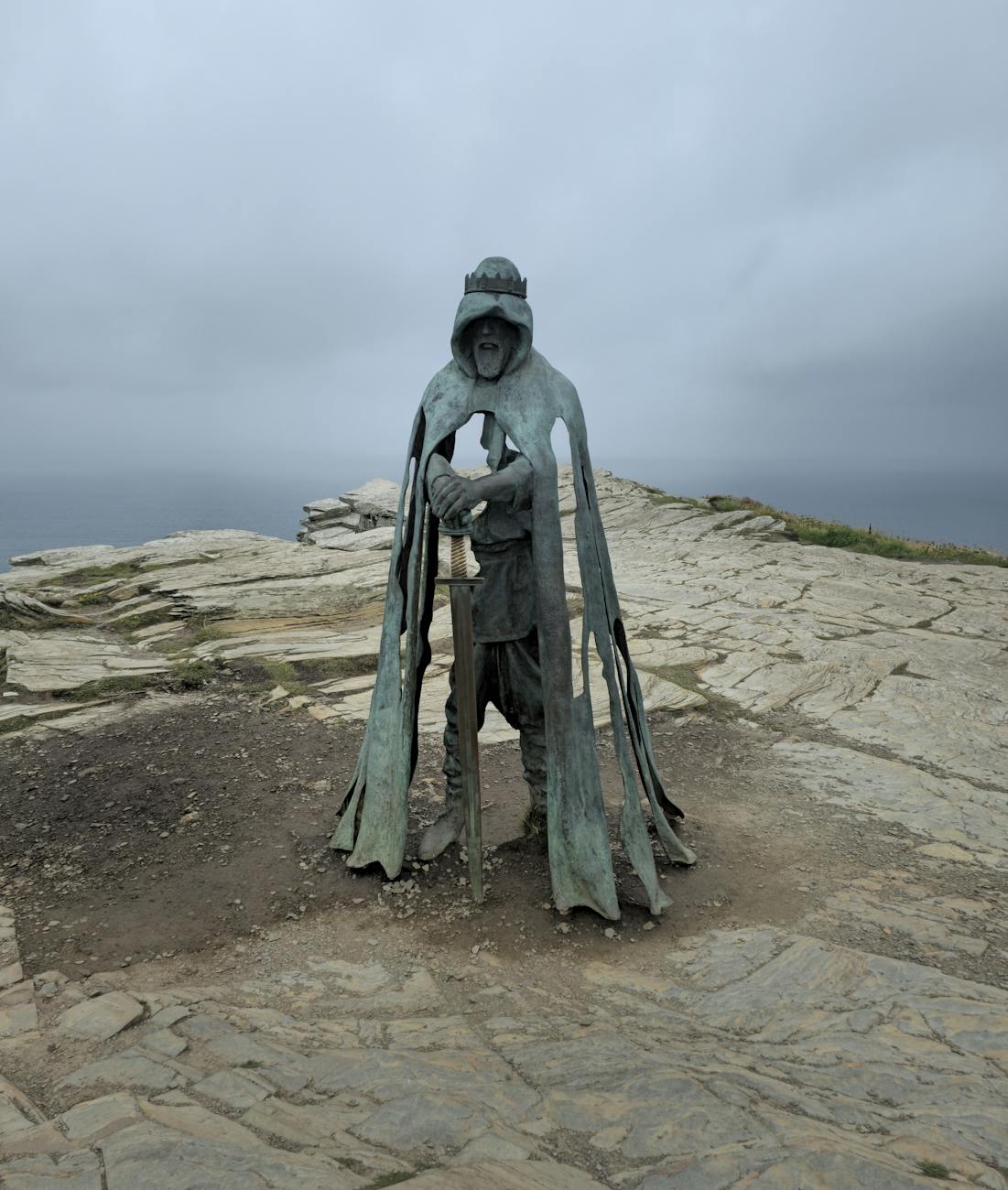The fortress of faith: majestic castle photoshoots
The Knights Templar uniform is more than mere clothing; it is a symbol, a piece of history worn on the shoulders. It speaks of piety, martial prowess, and a code that has echoed through centuries. For the modern enthusiast, reenactor, or history lover, donning the white mantle and red cross is an experience. But to truly capture its essence, the setting must be as legendary as the attire itself. A simple studio backdrop cannot contain the weight of this legacy. You need stone, earth, and sea—the very elements that shaped the Order.

This guide is for those who wish to transform a simple portrait into a powerful narrative. We will venture into three distinct, atmospheric locations—imposing castles, mystical forests, and haunting coastal ruins—to explore creative photoshoot ideas that will do justice to your Templar attire. We’ll delve into themes, poses, and practical tips to help you create images that feel less like a costume party and more like a window into the past.
Before you embark on your photographic pilgrimage, remember the core of the Templar spirit. They were warrior-monks, a duality of fierce protector and devout servant. Your photos should aim to capture this balance. Think less about aggressive battle poses and more about contemplation, vigilance, camaraderie, and solemn duty. Let the location guide your story and allow the uniform to become a natural part of the world you create.
The most intuitive and powerful setting for a Knights Templar photoshoot is, without question, a castle. These stone fortresses were the heart of Templar power, serving as commanderies, chapels, and bastions of defense across Europe and the Holy Land. The cold, unyielding stone provides a perfect contrast to the flowing white mantle and the vibrant red of the cross, creating a visually stunning and historically authentic backdrop.
When planning a castle photoshoot, think about the stories these walls could tell. Each battlement, courtyard, and chapel holds a different narrative potential. The goal is to integrate your subject into the environment, making them look like a guardian who belongs there, not a visitor.
Themes and mood
The overarching theme here is strength, order, and faith. Castles represent the structured, disciplined side of the Templar Order. The mood can range from the formidable and imposing to the quiet and pious. Utilize the golden hour—the period shortly after sunrise or before sunset—to cast long, dramatic shadows across the stone walls, adding a layer of gravitas and mystique to your images.
Creative shot ideas
- The solitary watchman: Position your knight on a parapet or looking out from an arrow slit. This classic shot evokes a sense of perpetual vigilance and duty. Frame them against the vastness of the sky or the landscape below to emphasize their solitary commitment.
- A council in the courtyard: If you have a group, arrange them in a castle courtyard. They could be inspecting weapons, studying a map laid out on a barrel, or gathered as if in a meeting. This tells a story of strategy and brotherhood.
- A moment of prayer: Find a quiet, secluded corner, perhaps near a chapel or a simple stone archway. A knight kneeling in prayer, head bowed with their helmet and gauntlets placed beside them, is an incredibly powerful image that speaks to the monastic side of the Order.
- The great hall gathering: If you have access to an interior hall, use it. The grand scale, perhaps with a large fireplace or tapestries, can frame a scene of a commander addressing his knights or a shared meal after a long journey.
Props and details
To enhance the authenticity, consider your props. A large, weathered Templar banner hanging from a wall, a heavy wooden chalice, or a scroll with calligraphy can add immense depth. Ensure the attire is prepared: the mantle should be clean and pressed, the leather polished, and the maille looking worn but maintained. These small details elevate the final image from good to unforgettable.
The whispering woods: mystical forest photoshoots
While castles represent the Templars’ established power, the forest represents their journey—the long, arduous pilgrimages, the secret missions, and the untamed wilderness between strongholds. A forest setting offers a completely different aesthetic, one that is more organic, mysterious, and perhaps a little more dangerous. It allows you to explore themes of perseverance, secrecy, and the Templars’ connection to the natural world.

The woods can be a powerful narrative tool. A dense, ancient forest suggests hidden knowledge and secrets, reflecting the myths that have long surrounded the Order. A sparse, sun-dappled woodland can feel like a sanctuary, a place for rest and reflection on a holy quest. The key is to use the natural light and textures of the forest to your advantage.
Themes and mood
The dominant themes here are pilgrimage, secrecy, and resilience. The mood should be atmospheric and slightly ethereal. Dappled sunlight filtering through the canopy can create a divine, otherworldly glow. Conversely, a misty or foggy morning can lend an aura of deep mystery, as if the knights are emerging from the pages of legend itself.
Creative shot ideas
- The pathfinder: Capture a knight on foot or, if possible, on horseback, navigating a winding forest path. This shot is all about the journey, the forward momentum of the quest. Have them looking ahead with determination, not at the camera.
- Making camp: A small group of Templars gathered around a campfire (created safely and responsibly) is a fantastic storytelling shot. It speaks of camaraderie and the brief moments of respite on a long campaign. Poses could include sharpening a blade, mending equipment, or sharing a simple meal.
- Contemplation by the water: A knight kneeling by a clear stream or reflective pool offers a moment of quiet introspection. They could be replenishing their waterskin, cleaning their sword, or simply gazing at their reflection, a powerful metaphor for self-examination.
- The hidden encampment: Use the natural cover of fallen logs, large rocks, or dense foliage to frame your subjects. This creates a sense of a hidden, temporary camp, reinforcing the idea of Templars on a clandestine mission.
Props and details
Props for a forest shoot should be rustic and practical. A leather-bound map, a simple wooden cross, a tattered bedroll, or a waterskin adds to the narrative. The uniform itself can be styled to look more travel-worn. A bit of dust on the hem of the mantle or a smudge on the cheek can add a touch of realism that makes the scene more believable. Let the environment interact with the attire; a few leaves clinging to the cloak can make the shot feel more immersive.
Echoes on the shore: haunting coastal ruin photoshoots
For a truly unique and poignant photoshoot, seek out coastal ruins. A dilapidated abbey, a crumbling seaside fortress, or even a simple stone watchtower overlooking the ocean can provide a backdrop filled with melancholy beauty and profound symbolism. This setting connects the Templars to their maritime power—their legendary fleet—and the sea as a gateway to the Holy Land and, ultimately, to their tragic downfall.

The coast is a place of endings and beginnings. The constant rhythm of the waves crashing against the weathered stones serves as a powerful metaphor for the passage of time and the erosion of empires. It’s the perfect location to tell the story of the Templars’ legacy—an order that, despite being officially disbanded, has never truly vanished from the popular imagination.
Themes and mood
The primary themes for this location are legacy, loss, and the eternal watch. The mood should be dramatic, windswept, and contemplative. An overcast, stormy sky can add a tremendous sense of drama, while a vibrant sunset over the water can create a feeling of poignant finality or enduring hope. The raw, untamed energy of the sea is your most powerful tool here.
Creative shot ideas
- Gazing out to sea: This is the quintessential coastal shot. Position a lone Templar within a ruined archway or on a cliff edge, looking out over the water. This pose is heavy with meaning: are they waiting for ships to arrive? Are they longing for a home they can’t return to? Are they contemplating the end of their era?
- Guardians of the ruins: Arrange a group of knights among the crumbling walls, standing stoically as if they are still guarding a long-lost fortress. Their pristine white mantles against the decaying stone creates a striking visual contrast, symbolizing their enduring spirit.
- The billowing mantle: Let the sea breeze be your collaborator. A shot that captures the Templar’s white mantle and red cross billowing dramatically in the wind is both visually dynamic and highly symbolic of their untamable spirit.
- Discovery among the stones: Create a mini-narrative where a knight discovers something among the rubble—a fallen cross, a weathered book, or an old coin. This adds an element of storytelling and purpose to the scene, suggesting a quest to reclaim lost knowledge.
Props and details
Props can be minimal here, as the location itself is the main feature. A nautical map, an astrolabe, or a simple lantern can add a nice touch. The most important detail is the interaction with the environment. Let the wind catch the cloak, the sea spray lightly mist the armor, and the sand gather at the boots. This integration of subject and setting is what will make your photographs feel authentic and deeply moving.







